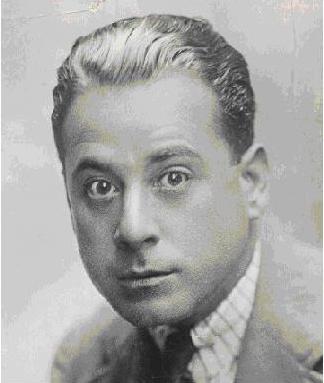The Foxy Foxtrot
by
Sandi
& Dan Finch
There
are many stories about how the Foxtrot came to be named. One links
the name to the Missouri Foxtrotter, a horse with a particularly
smooth way of traveling. Another says the name came from the fox
because of its unique gait, moving with its feet under its body on a
single track.
 But
the consensus credits Harry Fox, a vaudeville comedian and dancer
born in Pomona, who in 1913 was performing in the Ziegfeld Follies at
the Amsterdam Theater in New York, doing a routine that included
fast, trotting steps. But
the consensus credits Harry Fox, a vaudeville comedian and dancer
born in Pomona, who in 1913 was performing in the Ziegfeld Follies at
the Amsterdam Theater in New York, doing a routine that included
fast, trotting steps.
The
real story jumped out at us recently from a first-person article in a
1951 ballroom dance magazine. The article was headlined “The Night
Foxtrot Was Born.” Yes, it did apparently begin with Harry Fox. In
the article, Oscar Duryea wrote that he was hired by Ziegfeld to
introduce Harry’s routine to the diners one night at the supper
club on the roof garden of the theater.
In a
1960 postscript article by Duryea’s daughter, Dorothea Ohl, written
eight years after he died, she explained that Ziegfeld was trying to
introduce in the United States the European idea of combining dancing
and dining. Until then, Americans went out to eat and listen to music
at supper clubs and went other places to dance. The idea wasn’t
catching on; at Ziegfeld’s theater club after the evening
performances, a band played and played but the patrons didn’t get
up to dance. Duryea’s job was to get the diners up.
A
dance instructor by day, Duryea wrote that he was to dance among the
dinner tables with the girls from the Follies whenever the band
played Harry’s music. “Every time we danced, I asked the
customers to join in and dance the same steps,” he wrote. “After
running around, turning this way and that, always on the run, with
maybe the 12th or 13th girl, I remember I was tired.” So, he
recalls, he said to the next girl “Let’s do some of this in half
time, even if they cut our pay in half.” The partner agreed. “It’s
too fast for these tired businessmen anyway,” he quoted her. So,
they walked a few steps and ran a few steps. And got the diners to
join them on the floor.
In
1914, Duryea said he was called to London to teach his version of the
Foxtrot at a convention of the Imperial Society of Teachers of
Dancing (the keepers of the esteemed ISTD syllabus). He said they
liked it so much, they hired him to stay over for a week after the
convention for further instruction.
So
goes the story of the fox trot, first called Harry Fox’s Trot, then
Fox’s Trot and then simply Foxtrot.
From a club
newsletter prepared by Dan
and Sandi Finch , March 2014, and
reprinted
in the Dixie Round Dance Council (DRDC)
Newsletter, February 2016.

|
